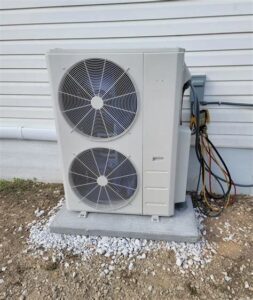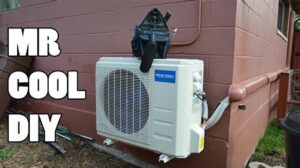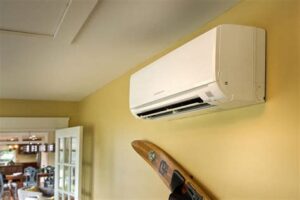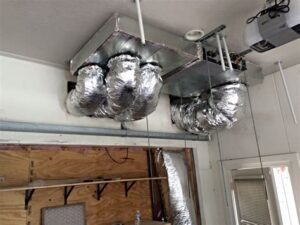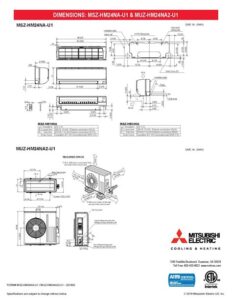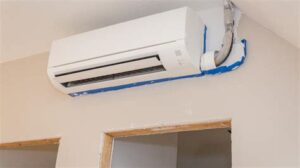Learn how to install a mini-split system with expert tips on choosing the right unit, preparing the space, and ensuring proper connections.Installing a mini split air conditioning system can be a game-changer for your home, offering efficient heating and cooling solutions without the need for ductwork. Whether you’re looking to enhance comfort in a single room or throughout your entire space, understanding the installation process is crucial. In this guide, we’ll walk you through each step, starting with how to choose the right mini split for your needs. Next, we’ll discuss preparing the installation area to ensure optimal performance. You’ll then learn the ins and outs of installing the indoor unit and connecting the refrigerant lines. Finally, we’ll cover essential tests and commissioning methods to ensure your mini split runs smoothly for years to come. Let’s get started on creating a comfortable atmosphere in your home!
Choosing the Right Mini Split
When it comes to installing a mini split system, choosing the right one for your needs is crucial. Mini split systems offer a variety of options, so it’s essential to consider several factors before making a decision.
First and foremost, assess the size of the space you intend to cool or heat. The cooling capacity of mini split systems is measured in BTUs (British Thermal Units). A small studio apartment may require around 9,000 BTUs, while a larger living space could require upwards of 36,000 BTUs. Consulting a sizing guide can help you determine the right capacity.
Additionally, consider the energy efficiency of the unit, which is indicated by the SEER (Seasonal Energy Efficiency Ratio) rating. Higher SEER ratings signify better energy efficiency, reducing your long-term energy costs. It’s also beneficial to choose a unit that fits your budget while not sacrificing quality and performance. Here’s a quick comparison table:
| Model | BTUs | SEER Rating | Price |
|---|---|---|---|
| Model A | 9,000 | 21 | $1,200 |
| Model B | 12,000 | 19 | $1,500 |
| Model C | 18,000 | 23 | $1,800 |
Lastly, consider additional features such as smart technology, Wi-Fi connectivity, and multi-zone capabilities. These modern conveniences offer better control over your system and can enhance your overall comfort. By taking the time to evaluate these factors, you can ensure that you choose the right mini split system that fits your specific needs.
Preparing the Installation Space
Before you commence with installing a mini split system, it is crucial to properly prepare the installation space. This process involves several steps that ensure the efficiency and effectiveness of the unit. Not only does it contribute to the longevity of the mini split, but it also enhances its performance.
First, identify a suitable location for the indoor unit. Ideally, it should be installed in a central location to allow for optimal air distribution. Ensure there is at least 5 inches of clearance above the unit, as well as an unobstructed area around it to facilitate adequate airflow. This will help maintain the system’s energy efficiency and comfort level within the space.
Next, you’ll need to prepare the exterior space where the outdoor unit will be installed. Ensure that the area is free from debris, vegetation, and other potential obstructions. The outdoor unit should be placed on a solid, level surface to avoid vibrations and maintain stability. Make sure you adhere to local building regulations and guidelines when selecting this area, as improper placement can lead to problems down the line.
Finally, take some time to plan the path for the refrigerant lines and wiring. Make sure the route is clear and that any necessary drilling, such as through walls, is adequately executed. This attention to detail will simplify the installation process and reduce the likelihood of complications after the system is set up.
Installing the Indoor Unit
When it comes to installing a mini split system, one of the most crucial steps is properly setting up the indoor unit. This is where the efficient cold or hot air is distributed throughout your living space. To ensure optimal performance and comfort, follow the guidelines outlined below.
1. Choosing the Installation Location: Select a location for your indoor unit that maximizes airflow and minimizes obstructions. Ideally, it should be mounted on an interior wall, away from direct sunlight and not blocked by furniture. Aim for about 7-8 feet from the floor for perfect air circulation.
2. Marking the Mounting Bracket: Use a level to mark the position where the unit will be hung. Attach the mounting bracket to the wall, ensuring it is securely fastened. This bracket will hold the weight of the mini split and must be stable.
3. Drilling a Hole: Here, you will need to drill a hole for the refrigerant lines, drain line, and electrical cable. The hole should be slightly angled downward, approximately 3 inches in diameter, to allow for proper drainage.
4. Attaching the Indoor Unit: With the mounting bracket secured, it’s time to hang the indoor unit. Follow the manufacturer’s instructions carefully. Once it’s mounted, make sure it’s leveled to prevent any issues.
In summary, careful preparation and following the steps above will ensure that your indoor unit for the mini split is installed correctly. This diligence will lead to improved energy efficiency and comfort in your home.
Connecting the Refrigerant Lines
Connecting the refrigerant lines is a crucial step in the installation of a mini split system. Properly connecting these lines ensures the efficient transfer of heat and cool air between the indoor and outdoor units, making it essential to follow the right procedures.
Before you start, gather all the necessary tools and materials. You’ll need a torque wrench, refrigerant lines, flare fittings, and pipe insulation. Additionally, make sure you have the correct refrigerant type specified for your system. In most cases, the refrigerant lines consist of two pipes: a larger suction line and a smaller liquid line.
Here is a step-by-step guide to help you connect the refrigerant lines:
- Step 1: Measure the distance between the indoor and outdoor units to ensure the refrigerant lines are cut to the appropriate length.
- Step 2: Insulate the refrigerant lines to prevent any heat exchange that could affect system efficiency.
- Step 3: Attach the flare fittings to each end of the refrigerant lines, and ensure they are securely tightened using a torque wrench.
- Step 4: Carefully connect the suction line to the outdoor unit, ensuring the connections are snug and leak-proof.
- Step 5: Connect the liquid line in the same manner, double-checking each connection for tightness.
- Step 6: Once all connections are made, it’s important to vacuum the lines to eliminate any moisture or air before charging the system with refrigerant.
Following these steps ensures that your mini split system operates efficiently and effectively. Make sure to check for any leaks after the installation and perform the necessary tests to confirm that the system is working correctly.
Testing and Commissioning the Mini Split
Once you have successfully installed your mini split system, the next critical step is testing and commissioning. This process ensures that your system operates efficiently and as intended. Proper commissioning not only verifies that all components are functioning correctly but also optimizes the performance of your mini split.
The commissioning process typically includes the following steps:
- System Checks: Ensure all connections are secure, including electrical wiring and refrigerant line connections.
- Power On: Turn on the unit and check for any unusual noises or vibrations. Listen carefully for consistent operation.
- Temperature Check: Measure the temperature at the air handler and verify it matches the settings on the thermostat.
- Refrigerant Levels: Use a gauge to confirm that refrigerant levels are within the manufacturer’s specifications.
- Airflow Verification: Confirm that the airflow is evenly distributed and that filters are clean.
Following these steps will ensure that your mini split is not only installed correctly but is also ready to provide comfortable heating or cooling. It is recommended to document the results of your tests for future reference.
Frequently Asked Questions
What is a mini split air conditioner?
A mini split air conditioner is a type of cooling and heating system that consists of an outdoor compressor unit and one or more indoor air handling units, allowing for efficient temperature control in different rooms.
What tools do I need to install a mini split?
You will typically need tools such as a cordless drill, level, measuring tape, pipe wrenches, screwdrivers, and a vacuum pump to install a mini split air conditioner.
Do I need a professional for mini split installation?
While some homeowners may choose to install a mini split themselves, it is recommended to hire a professional to ensure proper installation and to comply with safety and local building codes.
What are the steps to install a mini split?
The general steps include selecting a location for the indoor and outdoor units, mounting the indoor unit, installing the outdoor unit, connecting refrigerant lines and electrical wiring, and finally testing the system.
How much space is needed for a mini split installation?
Usually, you should have at least several feet of clearance around the outdoor unit for proper airflow and maintenance, while the indoor unit should be mounted at an appropriate height on the wall for effective air distribution.
How long does the installation process take?
The installation of a mini split can take anywhere from a few hours to a full day, depending on the complexity of the installation and the number of indoor units being set up.
What should I do after installing a mini split?
After installation, it is important to test the system to ensure it operates correctly, check for leaks, and familiarize yourself with the thermostat and control settings.
